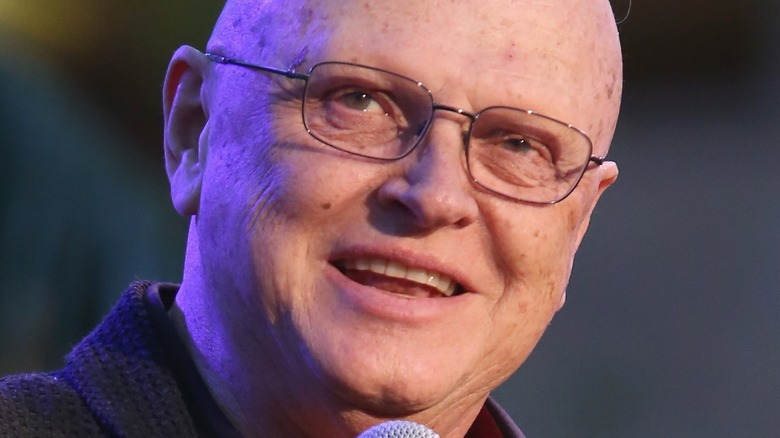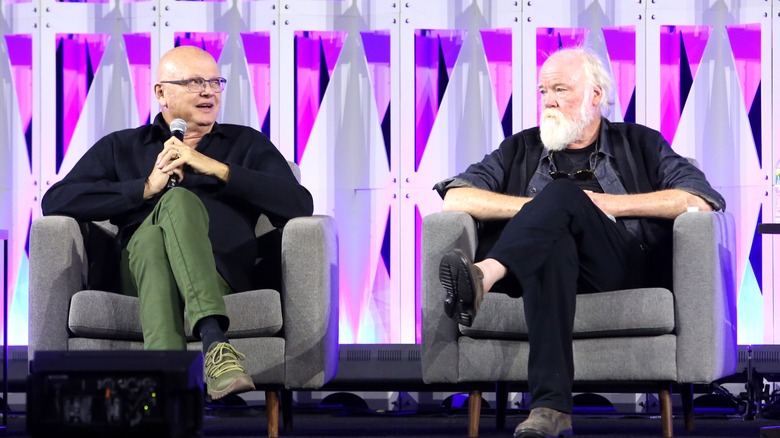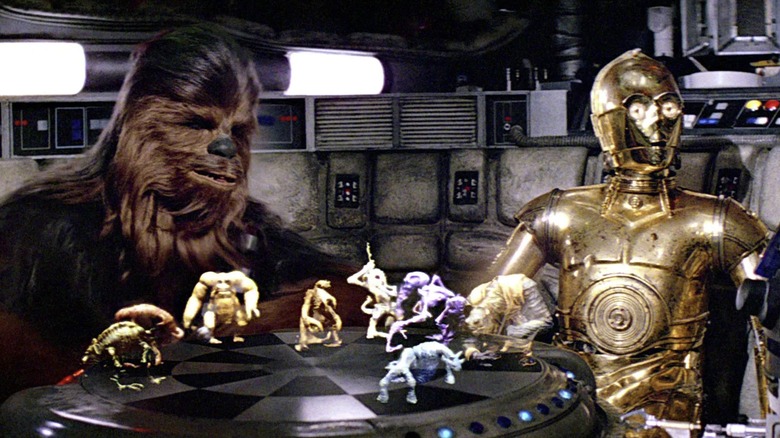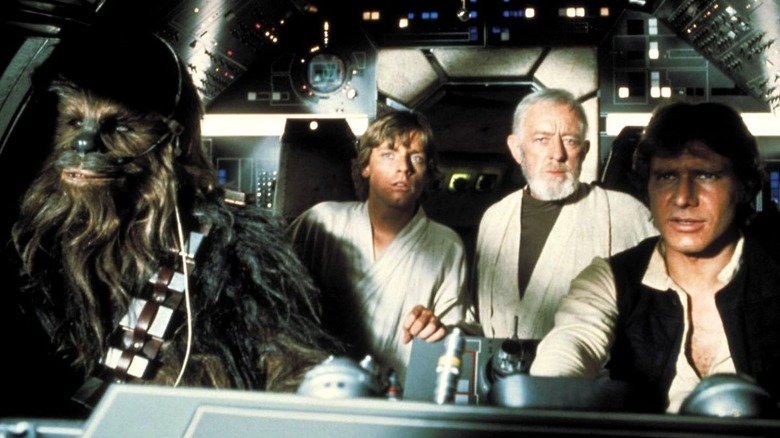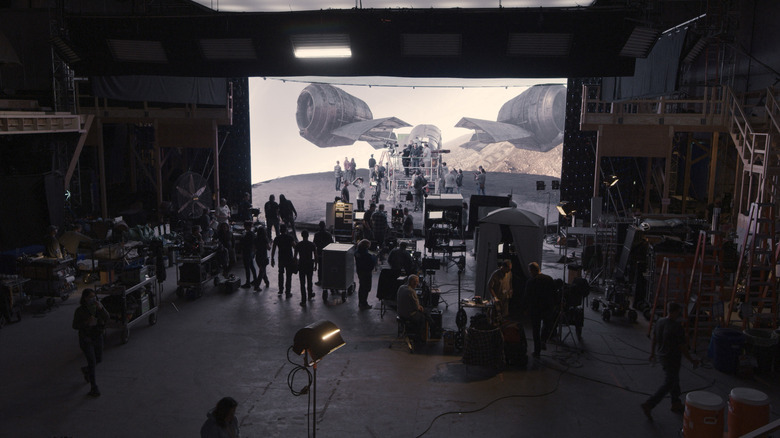Industrial Light And Magic's Dennis Muren And Phil Tippett Look Back At Making Star Wars - Exclusive Interview
As filmmaker George Lucas planned to direct an ambitious space opera called "Star Wars" back in 1975, he realized to his dismay that there weren't any companies around that could handle the kind of extensive visual effects he needed to bring his sci-fi fantasy to life. So, he started one: Industrial Light and Magic (ILM), which not only changed the course of cinematic history with the groundbreaking "Star Wars," but went to become perhaps the leading visual effects company in the world.
In the new six-part Disney+ documentary, "Light and Magic," director Lawrence Kasdan chronicles the founding and history of this now-legendary company. Kasdan interviews many of the founding members who become visual effects icons in their own right, including John Dykstra, who pioneered the motion control technology that made realistic space battles possible; Richard Edlund, miniatures and optical effects expert; Phil Tippett, creature design, stop-motion and CG wizard; and Dennis Muren, the all-around visual effects supervisor and creator who remains a part of ILM to this day.
Some of these men were childhood friends, others went to the same school, and others still met while working together at obscure but seminal early companies like Cascade Pictures. Their shared love of filmmaking and imaginative storytelling brought them together to create the never-before-seen work that made the original "Star Wars" a milestone, while also launching ILM to greater heights and even more breakthroughs in the decades to come (and still going).
"People look to ILM for the future because we've been the future for so long," says Dennis Muren in Looper's interview with him and Phil Tippett. "I don't think that's ever going to go away. That's part of us and everybody has strived for that sort of thing."
Industrial Light and Magic came about organically
Watching this documentary, it's striking how serendipitous this all was. Some of you knew each other through school, a couple of people were childhood friends, and some of you worked together at Cascade Pictures. Is it miraculous, the way this group all came together initially?
Phil Tippett: Yeah, it was a miracle.
Dennis Muren: But there are commonalities. I brought Ken Ralston into it and then eventually brought Phil and John Berg into it. I brought my little group of people that I trusted. John Dykstra had his group of people that he trusted also. Richard Edlund had his group that he trusted. You hire the people you know who can do the work.
There's lots of different types of work within that to get that show done. There were some outsiders like me. I'd never worked with John before, never worked with the technology at all, like what was going on in "Star Wars," but it is serendipity that [it] all happened because somewhere in there, if there had been an obstacle that came in and somebody saying, "Nope, we've got to do it like this," the whole thing could have changed.
George's attitude to it also was like, "Do your best, try to not go overboard, make sure you get it done on time and do the best you can do on it." It was very lucky the way it all happened, but also [there were] a lot of smart people working on it. George and [producer] Gary Kurtz made the decisions they made all the way down the line to us. We made some very smart decisions [when] we had our fingers crossed and adjusted all the time when there were problems. There were problems that came up all the time, and we tried to make adjustments.
Phil Tippett was George Lucas' go-to creature maker
What was it like working with George Lucas?
Tippett: I entered the project pretty much on the chess scene in "Star Wars [Episode IV]" and George became aware of me as his monster guy. For the tauntaun [in "The Empire Strikes Back"], I spent a couple of days doing maybe a few dozen drawings of the tauntaun. It could be this, could be that. I wasn't married to anything, so he chose one. In the script, it was a snow lizard, but I threw that out and designed something that was more mammalian, that looked like it could be a creature that existed in the snow because a lizard wouldn't do that. George chose a design and asked for a maquette and I made a little maquette.
I found that George was, particularly on "Return of the Jedi," very much like a documentary filmmaker. All we knew was there was going to be a scene, like the cantina scene with Jabba. For the creature designs, I threw a wide net and had half a dozen sculptors, some of whom were not very good, create as many creatures as we could in a week. George would come in and say, "This one with the blue polka dots and the long nose and whatever, that's going to be a singer, and this blue guy with floppy whatever they are, is going to play the organ." He's working like a documentary filmmaker.
He would go through and cherry-pick. The names for a lot of those characters were riffs on what we called them. He picked one out and said, "What's this?" I said, "That's a calamari man," because it looked like a squid. He said, "Okay, that's Admiral Ackbar," and called his species Mon Calamari.
Seeing Star Wars for the first time
When did it hit you that the original film was really going to work?
Tippett: It was very minimal. George would screen the cantina and the chess set for us. We were all in pig heaven and really happy that we could be involved with anything, but Dennis was significantly more involved than we were.
Muren: I didn't know. I'd seen little clips from it. I couldn't tell. It always was at a real rough stage. As soon as it was over, I went to work on "Close Encounters of the Third Kind." Halfway through "Close Encounters," I came down with walking pneumonia, so I couldn't move around. That's when, naturally, they had the cast and crew screening.
I went and saw it there and the theater was full. Half the people who were in the theater had never seen any part of it. I was in a delirium watching it. The audience went nuts from that very opening shot all the way through it. I thought, "I've never seen anything like this before." I'd never really been to a big premiere that had been successful.
I was at the first screening of "2001: A Space Odyssey," which was not like that at all. Everybody was like, "What the hell am I looking at?" But in this show, they got it. hat's when I started thinking, "Boy, this could be something really big," but what does "really big" mean? It means is it's going to be in the theaters maybe for six months or eight months. That's what it was in those days, but nothing like what it's become.
Why ILM is still lighting the way for visual effects
What would you say is ILM's continuing impact on the industry in terms of continuing to create breakthroughs like The Volume?
Muren: People look to ILM for the future because we've been the future for so long. It's always been something that's in our culture and it's from George walking in and saying, "I want to pan the camera around these spaceships," and everybody's saying, "No, you can't do it," and John Dykstra said, "We can do it." That's what's there. That's true in everything we do. I don't think that's ever going to go away. That's part of us and everybody has strived for that sort of thing.
Does everyone from the original group stay in touch? Are you all still friends?
Tippett: Dennis and I meet up every six to whatever weeks. We're big fans of Casper's Hot Dogs in Oakland, so we'll meet up quasi-regularly for Casper's. So we stay in touch. Our families know each other and are pretty close.
Muren: I'm getting a little hungry too. It may be time.
"Light and Magic" is streaming on Disney+ now.
This interview has been edited for clarity.
